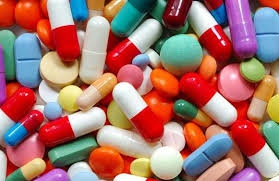 TEHRAN, Nov. 17 (MNA) � An Iranian knowledge-based company has developed an anticancer drug, SinaDoxosome nanodrug.
TEHRAN, Nov. 17 (MNA) � An Iranian knowledge-based company has developed an anticancer drug, SinaDoxosome nanodrug.The medication has reportedly been prescribed for treatment of mammary and ovarian cancers and has also been exported to Russia.
Mahnaz Qomi, the directing manager of Exir Nanosina knowledge-based company said that the anticancer doxorubicin HCl liposome�injection medication had been developed and marketed with commercial brand name of SinaDoxosome and was first in the Middle East in production; �The nanodrug was developed in Sobhan Oncology Company and was approved by the Ministry of Health in 2012; the product reduces the size of malignant tumor through cancer cell necrosis,� she said. �The major applications of SinaDoxosome are in treatment of mammary, advanced ovarian cancers, multiple myeloma, and Kaposi's sarcoma in AIDS patients,� she added.
Qomi said that the public had indicated satisfaction with the efficacy of the drug; �since the product was marketed, more than 6000 vials of the drug have been prescribed for patients by oncologists; according to the developer company, the foreign models of the drug is priced at $700 per vial, while the domestic product has been priced at $116, and using insurance coverage reduces the costs to only $11,� Qomi said.
The product has been distributed by Daroupakhsh Distribution Company. According to Qomi, the product would bring $5.4mn in savings from costs of importing the drug. �If the demands for the drug rise, the amount produced would increase up to 20,000 vials annually; currently, 400 vials of the drug have been exported to Russia,� she added.
On the mechanisms of the drug function, Qomi said that a great restriction and drawback of using doxorubicin was its side-effects in patients with a heart condition in the long-run. �However, using SinaDoxosome is absorbed selectively by cancer cells due to its 100nm size, thus ruling out the side-effects associated with concentration of the drug in healthy cells,� she said. �The polyethylene glycol covering on liposome hides the drug from macrophages and thus improves the half-life of the drug in circulation,� Qomi said.
By Mehr News Agency
The Iran Project is not responsible for the content of quoted articles.











